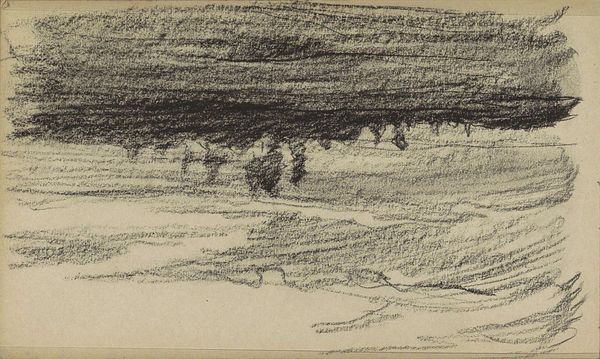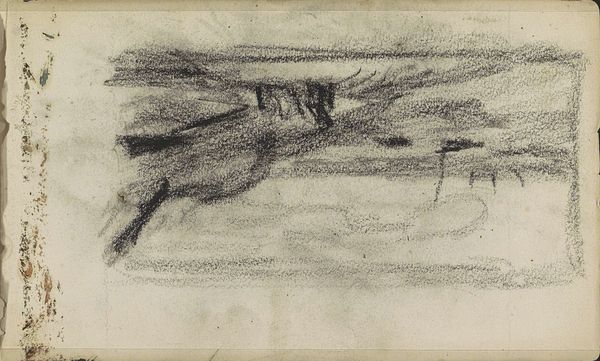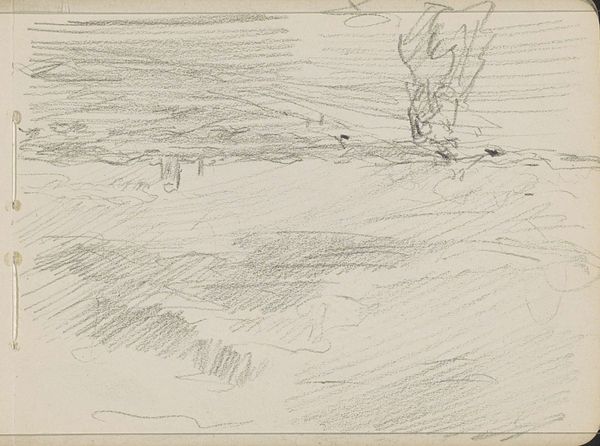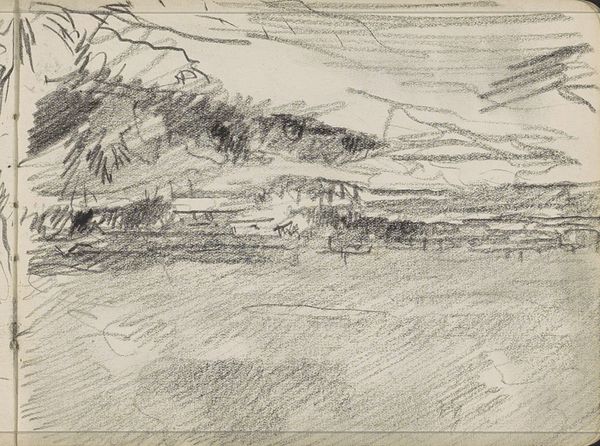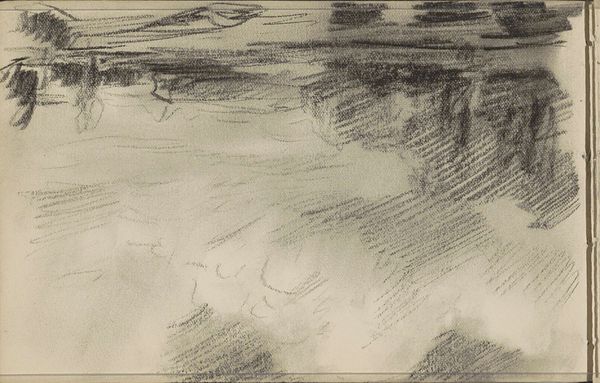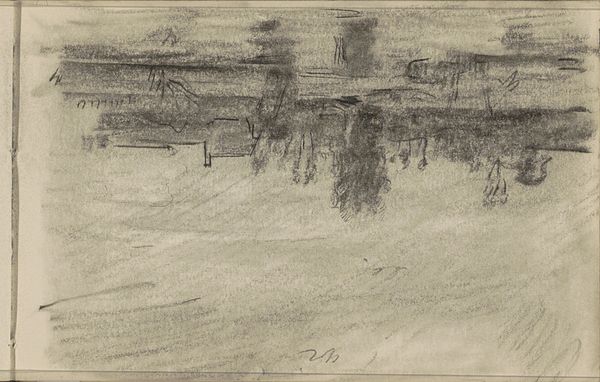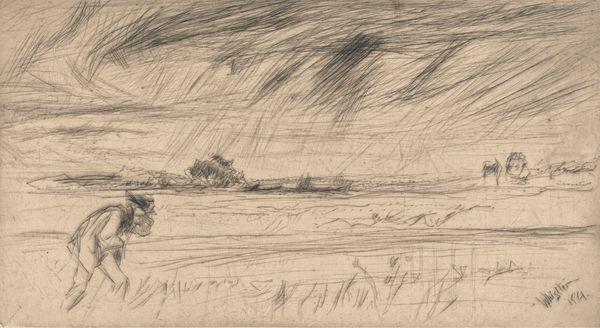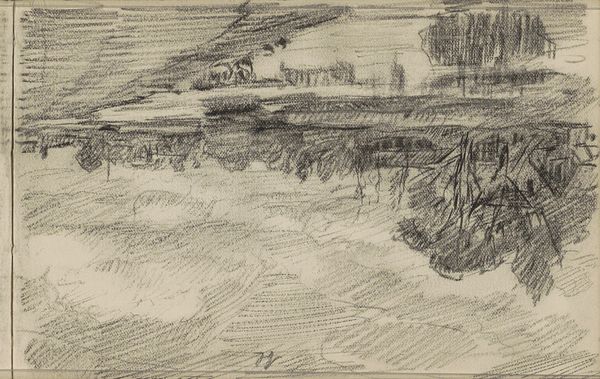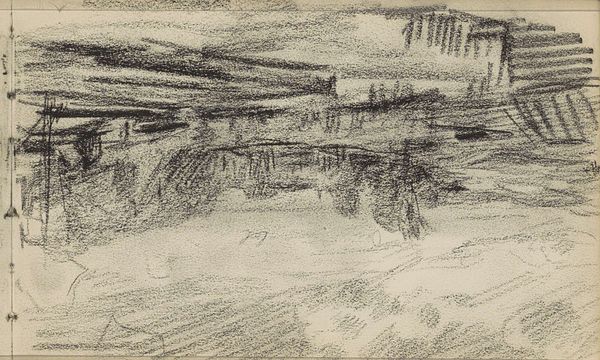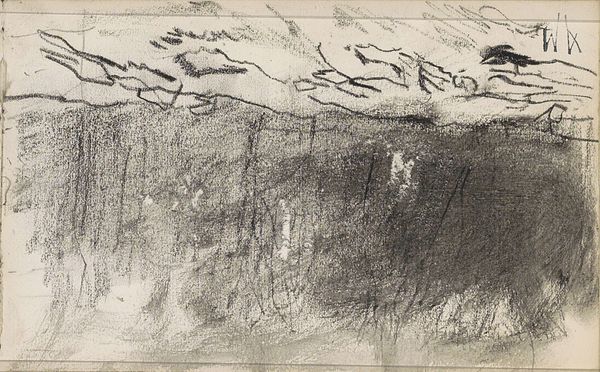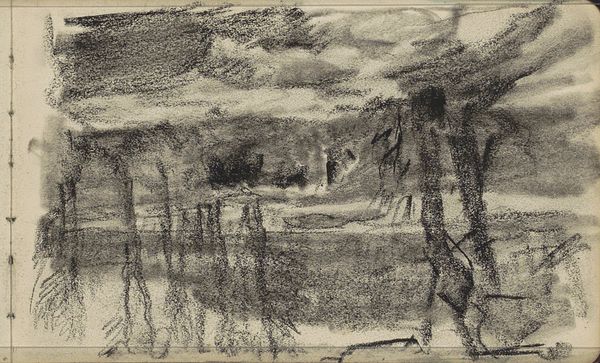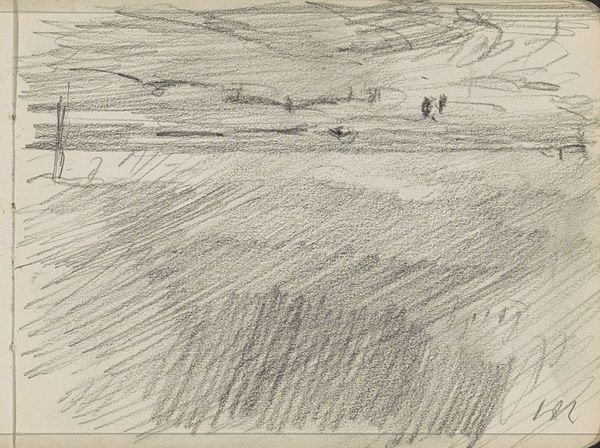
drawing, pencil
#
drawing
#
landscape
#
pencil
#
realism
#
building
Copyright: Rijks Museum: Open Domain
Curator: Before us, we have Johan Antonie de Jonge’s "Landscape with Towers in the Distance", a pencil drawing that the artist likely worked on sometime between 1901 and 1927. Editor: Wow. My first thought is bleak. Utterly, devastatingly bleak. It’s all these grays and scratchy lines pressing down…like a storm coming for you and there’s nowhere to hide. You can practically taste the grit. Curator: The realism in this sketch really communicates a mood, doesn't it? We see that the horizon is punctuated by the suggestion of towers – whether industrial or civic – it’s hard to say exactly, but I feel as though de Jonge might be referencing the growing urbanization of the Netherlands in the early 20th century. What’s curious here is the empty space in the foreground... Editor: It is haunting, isn't it? That empty space makes you wonder if it is supposed to symbolize emptiness after urban developments? Did folks leave the countryside for cities hoping for new opportunities and perhaps met disappointment instead? I just feel it. A bit dramatic maybe, but… Curator: It’s definitely there! Perhaps the drawing speaks to a collective experience, where people, particularly in the agrarian sectors, felt a sense of displacement amidst these rapid transformations. I can imagine that for de Jonge this landscape might symbolize societal anxieties concerning progress, environmental changes, and socioeconomic disruptions of that period. Editor: So true! I didn't even realize I could read that much into what, at first glance, feels like just…well, weather. Thank you! Curator: Likewise, your initial feeling sets a somber tone reflecting perhaps the social implications of its time!
Comments
No comments
Be the first to comment and join the conversation on the ultimate creative platform.
